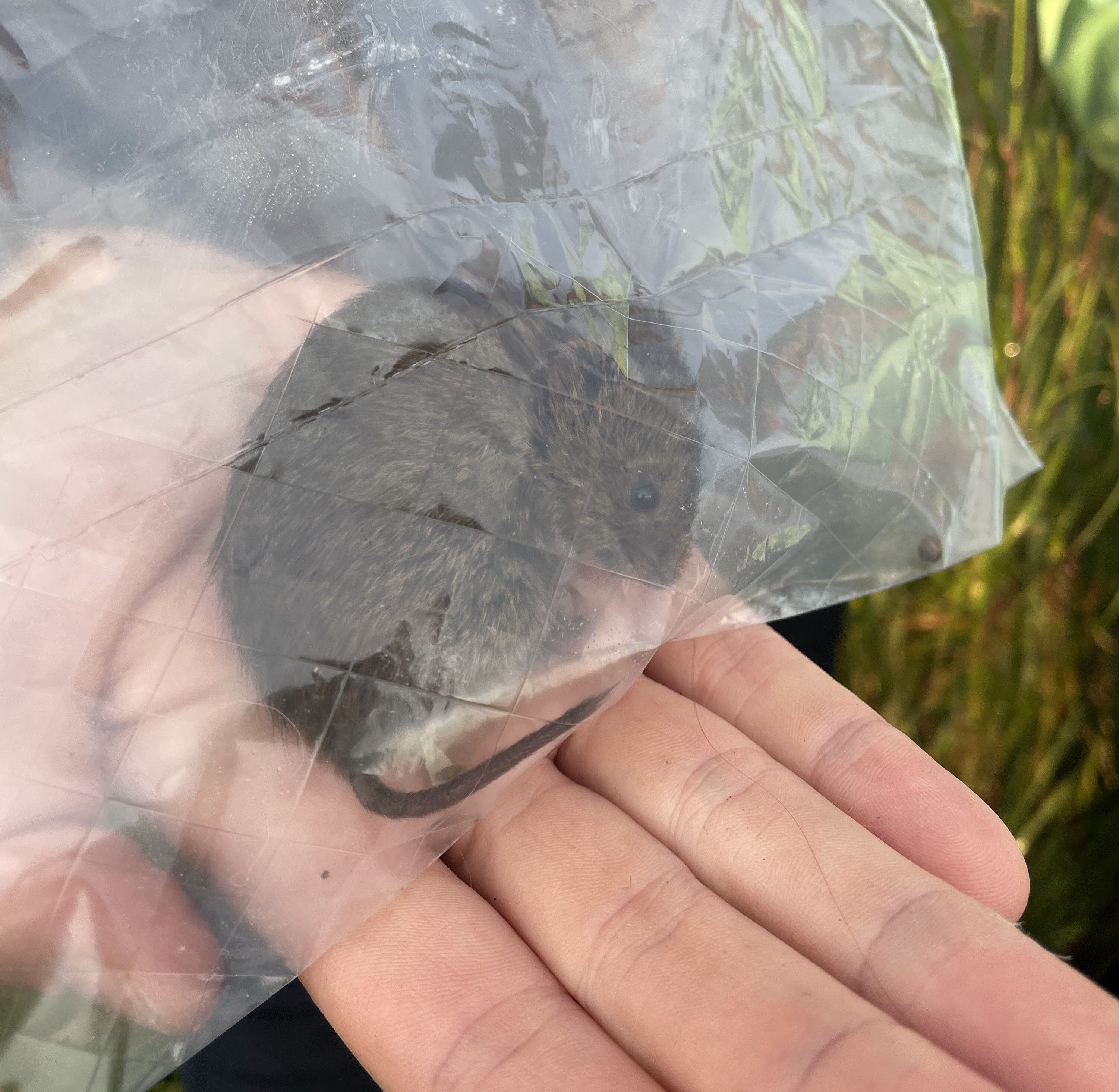
Last month, we wrapped up small mammal trapping. Affectionately known as “smammaling,” small mammal trapping is both exhausting and rewarding. To prevent the smammals from baking inside the traps all day, we set traps just before sunset and pick them up just after sunrise. This creates some long days, but it gives us a chance to explore the Trust at a new time of day, when different critters are active.
The critters we encountered the most often were obviously the small mammals. All the smammals were adorable. Every time I found a new smammal in the trap, I would take at least a couple of seconds to fawn over them before getting to work. After being sentenced to air jail (a big Ziploc bag), we’d sex, age, and identify the species of each captured smammal. Overall, we captured 8 different species, with Eastern meadow voles (Microtus pennsylvanicus) and deer mice (Peromyscus maniculatus) being the most common. The least common species were a Prairie Shrew (Sorex hayendi), a meadow jumping mouse (Zapus hudsonius), and a plains pocket mouse (Perognathus flavescens).
The Eastern meadow voles were generally the most spirited, constantly running around the bag, making it quite difficult to measure them. This got even more difficult when two of them (somehow) got stuck in the same trap. This happened not once, but twice! The first time, we caught a pair of unhappy males who were squeaking loudly and bickering amongst each other. The second time consisted of two uncharacteristically calm females. The cutest smammal we caught was also an Eastern meadow vole. It can sometimes be difficult to determine if an individual is a juvenile or just a small adult, but in his case, it was obvious. He was just so tiny!! He was barely bigger than a gumball. Curled up, he would’ve fit perfectly on a tablespoon, like a decadent chocolate truffle. It was hard to release him when all I wanted to do was keep him safely tucked in my pocket, but after an extended period of fawning, we let him run home to his mother.
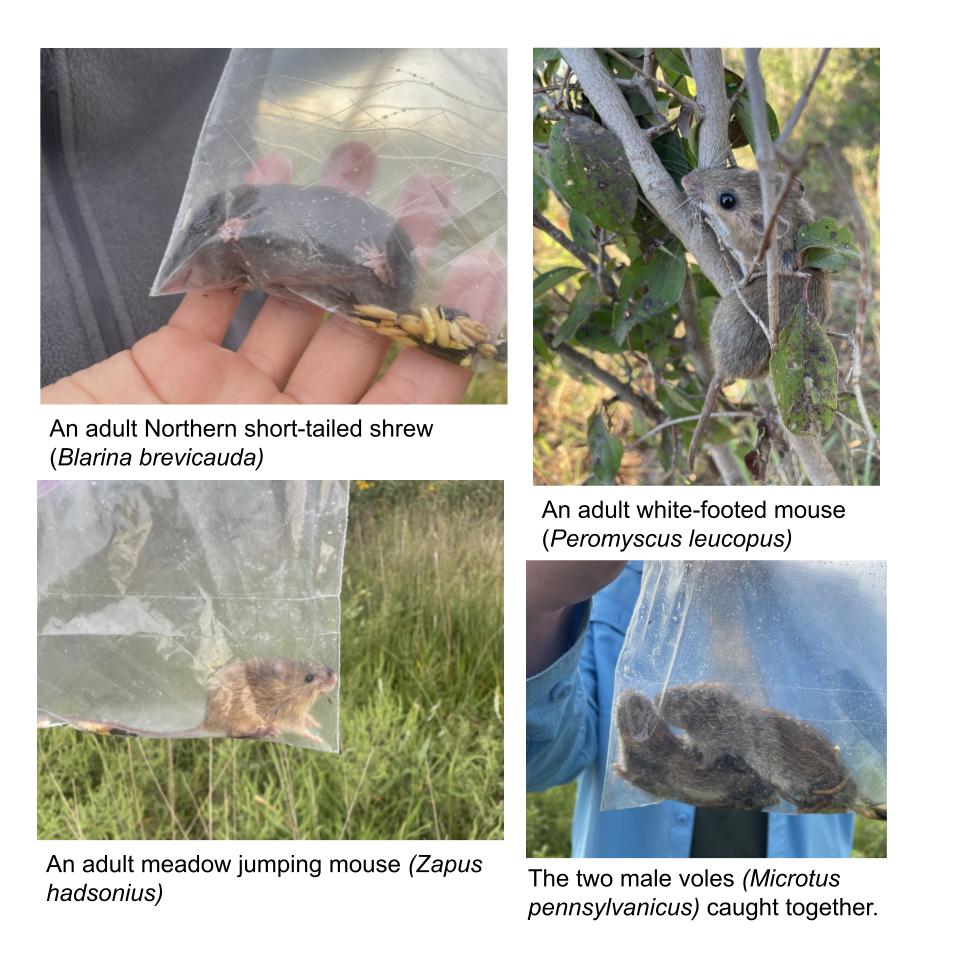
The smammals weren’t the only cool critters we found. There are a variety of animals that are crepuscular, meaning they’re most active at dawn and dusk. Our normal work hours don’t usually include these times, so smammaling presented a rare opportunity to observe these creatures. Some of the ones we saw include common nighthawks, white-tailed deer, and the new resident skunk who hangs out around the bunkhouse.
There were also some noteworthy diurnal species we saw. I saw loggerhead shrikes for the first time. Unfortunately, shrikes are facing population declines, so seeing them in the Midwest is becoming more difficult. Another new species for me was a smooth green snake, one of the rarest snake species in Nebraska. We found her using one of the traps as a heating pad in the early morning. My last highlight is not a new species, but a new behavior. While setting traps in Ruge, I found a pair of praying mantises on a date. Evidently, the male said something rude because the female was devouring him. It’s common for female praying mantises to cannibalize the males during copulation, with estimates of 13-28% of encounters becoming deadly. I have learned a lot about the drivers of this behavior in my entomology course, so seeing it in person was really exciting!
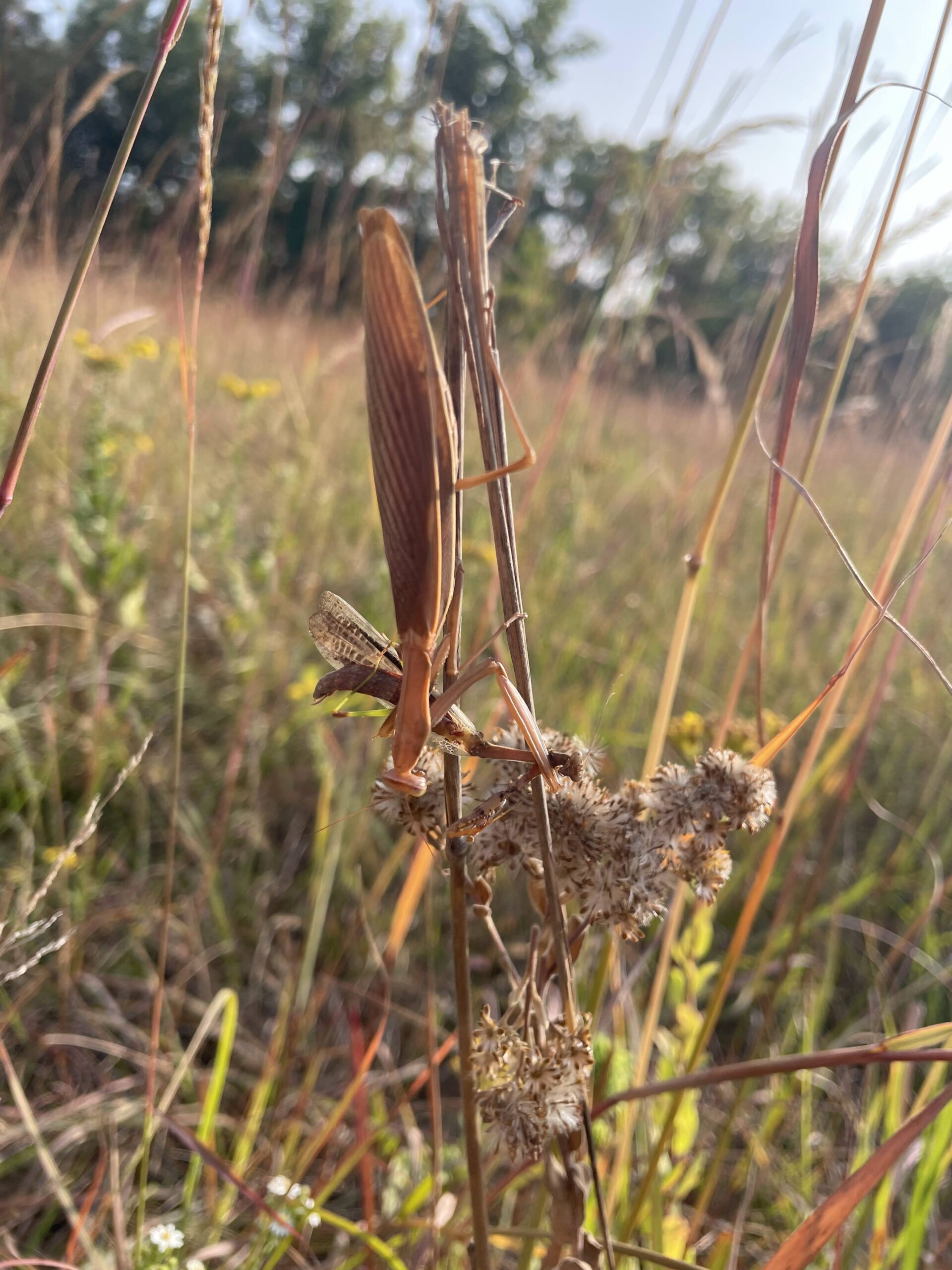
Normally when I’m out in the field, I’m constantly looking down. That’s how I found the praying mantises and green snake. But that changed during smammal season. I constantly found myself looking up at the rising or setting sun. There’s nothing quite like a prairie sunset. Throughout the summer, I’ve been going for runs around sunset and admiring how the different flowers compliment the colors. But despite seeing it nearly everyday, I still find myself awed. The pinks and oranges swirl across the wide open sky, diffusing out from the shrinking sun. Sunsets are, of course, always beautiful, but there’s something about the late summer and early fall vegetation that makes it more glorious. The sun’s golden rays stretch across the prairie tying the warm shimmer of the Indiangrass’ fluffy seed heads and the deep yellow glow of the sunflowers with the clouds above.
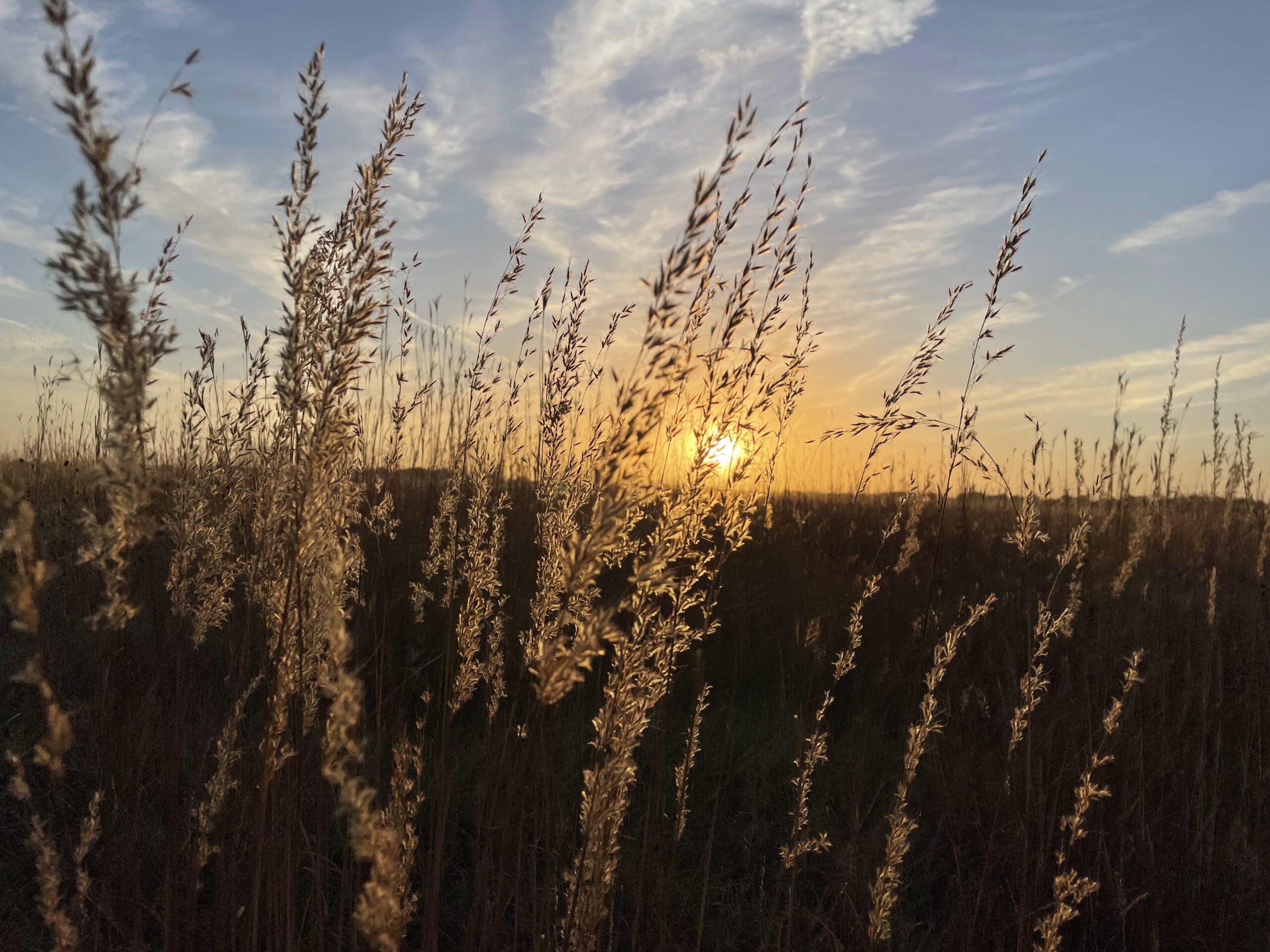
The sunrises here are also breathtaking, but there’s something about a sunset that lets you slow down. Sunrises are for new beginnings, filled with excited, yet busy movement. Sunsets, on the other hand, are perfect for reflecting and reviewing the day. Even when I’m still at work, the aura of the setting sun compels me to take a deep breath and reflect. It gives me a chance to think about how grateful I am to be here as a part of an ecosystem that is older than humanity itself, a single note in an everlasting symphony.
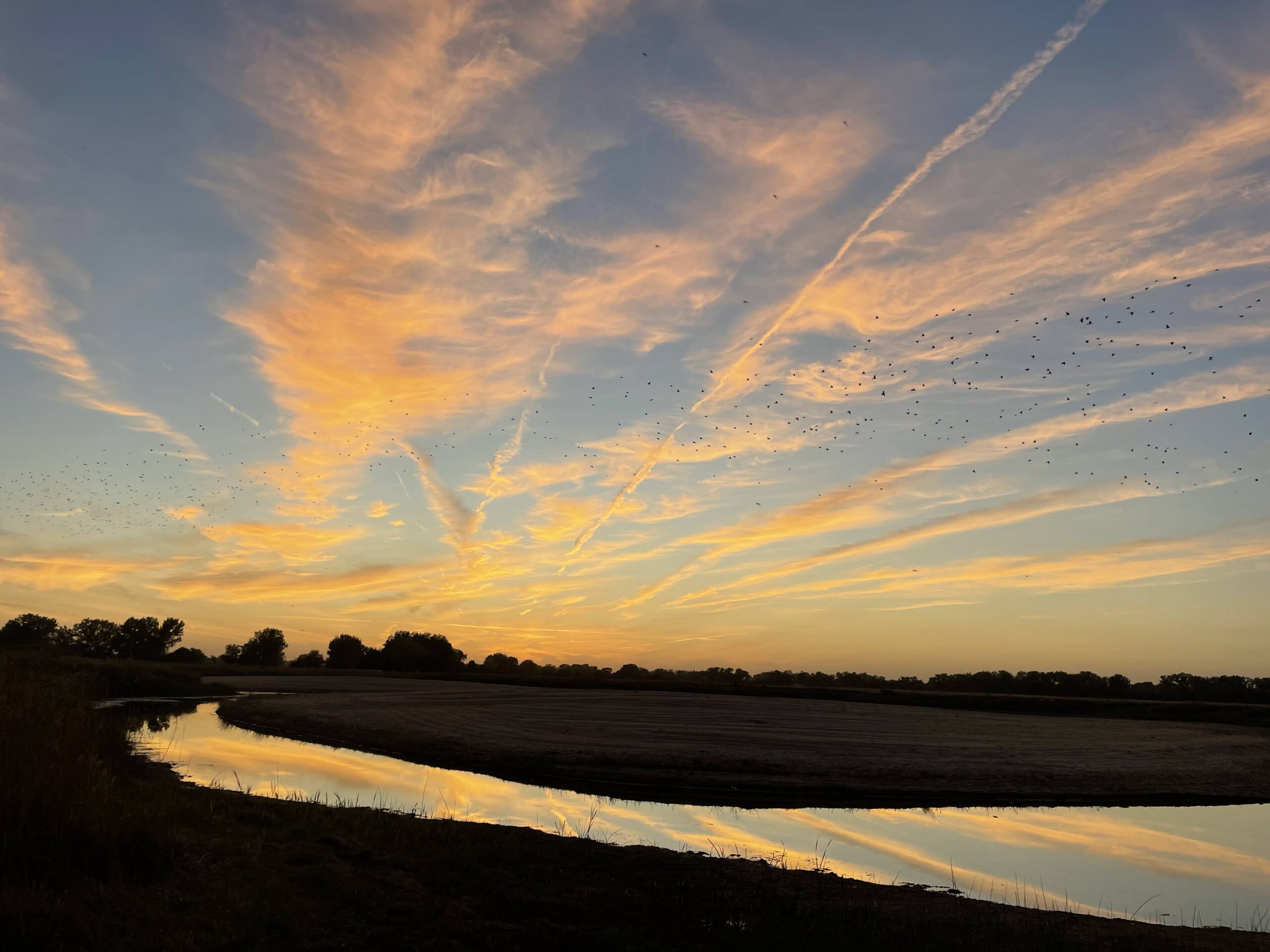
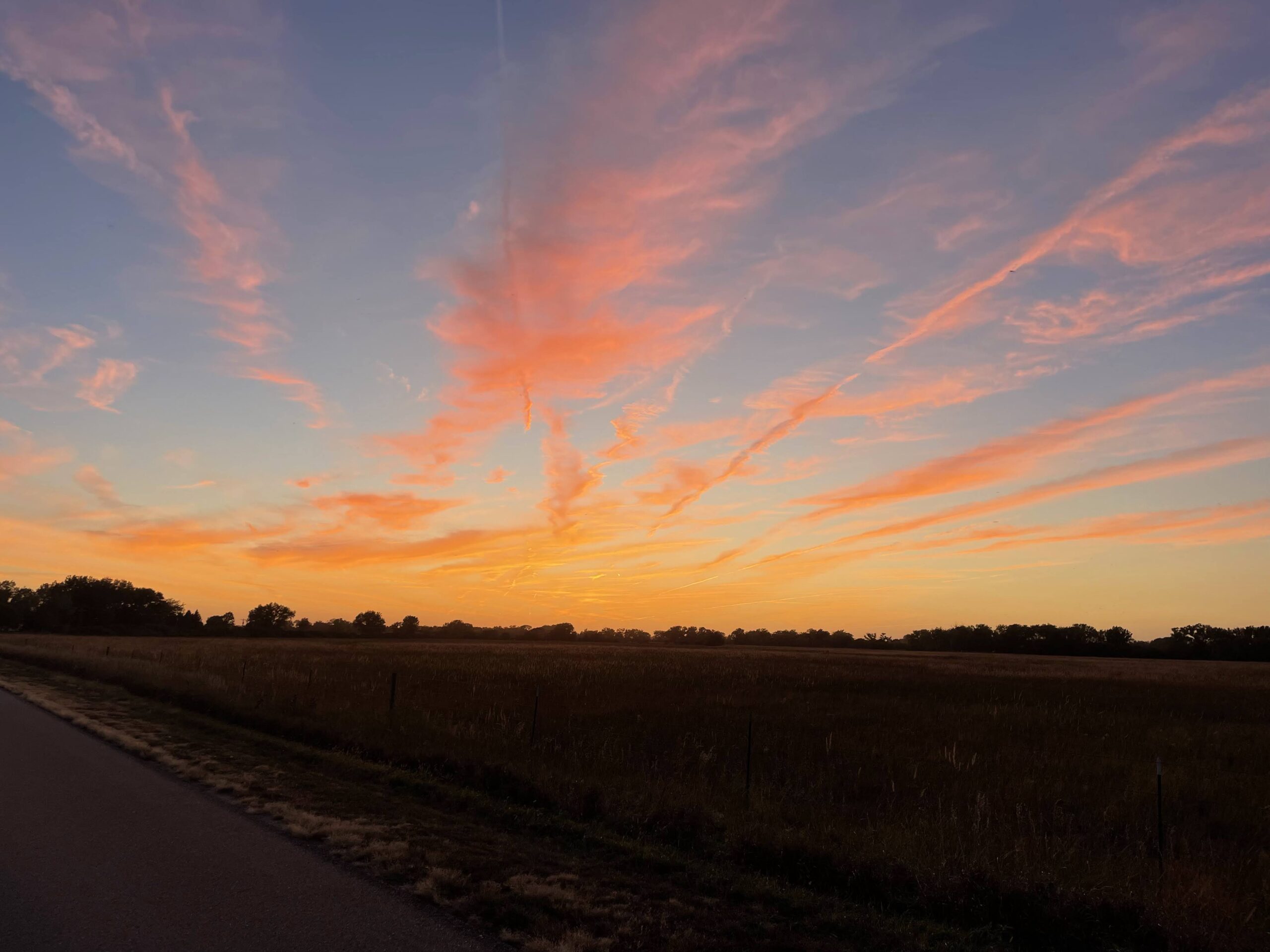
I’m so grateful that I not only have the chance to experience the sunsets firsthand and see wildlife up close, but I get to share it all with you! Thank you for reading our blogs and supporting the Crane Trust’s work. If you didn’t get enough smammals from this blog, fear not! There is much more small mammal content! To see a video compilation of the critters click here or check out @crane_trust on Instagram!
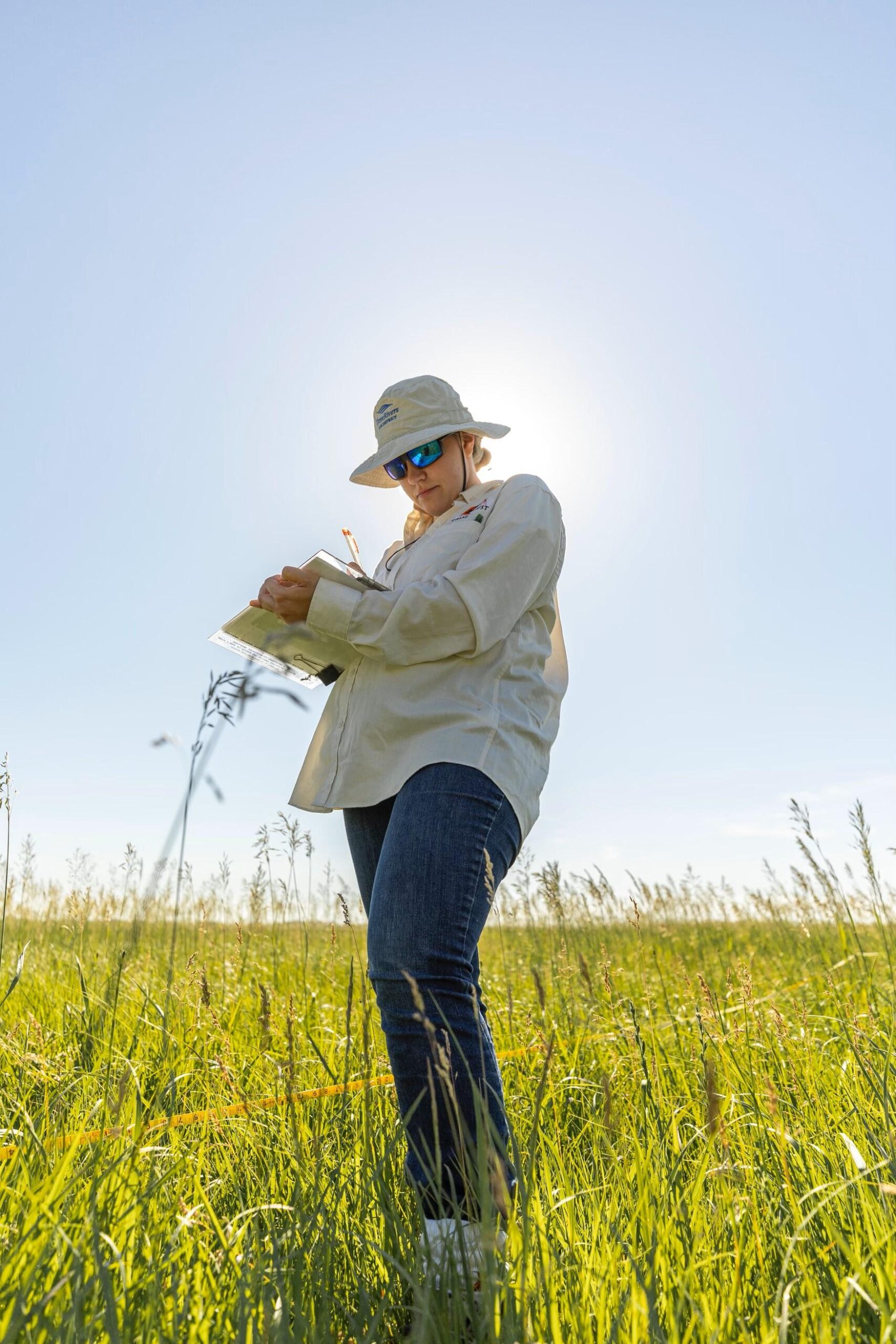
Eleanor Muzzy
Saunders Conservation Fellow 2024-2025
Prior to coming to the Crane Trust, Eleanor had worked predominantly with tallgrass prairies around the Twin Cities in Minnesota. She has a strong background with collecting vegetative data and treating invasive plant species.
emuzzy@cranetrust.org
